
By Karoline Sears | Follow me on Mastodon: @spelled_with_a_k and Substack
In 2011, the Hockey News named James van Riemsdyk (JVR) the face of the “new” power forward. Since his sophomore season, JVR has experienced numerous seasons with significant injuries, including concussions, hip problems, and muscle strains. Despite his history of injuries and veteran status, JVR is still considered a force to be reckoned with. So what is (or was) the power forward, do they still exist, and is that what JVR is bringing to the Boston Bruins in the 2023-2024 season?
What Makes a Power Forward?
Cam Neely is often considered the first power forward in the NHL. Power forwards are known for their size, physicality, and goal-scoring ability. It’s probably the first thing people think of when they think of hockey players. While this style of player has gone by the wayside in favor of faster, more skilled scoring players, there is still a place and need for power forwards.
Today, power forwards still need to maintain a physical presence on the ice, but they also need to be fast, agile, and score more than fight. Think Brady Tkachuk: he’s a physical pest on the ice who has averaged 25 goals per season thus far. The Boston Bruins are already stocking up on power forwards with the addition of veteran Milan Lucic, too.
How does JVR fit in?
JVR is a 6 foot 3, 208-pound left winger; Over the last few seasons, the Bruins’ average weight has been increasing from 198 pounds in the 2020-2021 season and currently sits at 202 pounds. The average height has been a steady 6 foot 1 for the last few seasons, too. Despite boasting an average height of 186 cm and weight of 202 pounds ahead of the 2023-2024 season, the Bruins currently sit in 9th place for weight. Two teams (Washington and New York Islanders) top out with an average of 207 pounds. It’s clear that the addition of Looch, JVR, and Shattenkirk has contributed to the increase in weight on the team.
If we use the classic power forward archetype à la Cam Neely, Milan Lucic absolutely falls into this category. You can see it in his hits, goals, and penalties in minutes (PIMs), as demonstrated in a previous article. But JVR doesn’t really fit this mold. I’m not even sure that he can be considered a “modern” power forward, either. Let’s take a look at some key power forward metrics: goals/points, hits, and PIMs.
As you can see in the graph below, when it comes to the classic power forward metrics, JVR doesn’t really stand out. He has very good goal-scoring/points stats, but his PIMs count is pretty low, considering the context. As we zoom in on these numbers, it might give us a better idea of what to expect from JVR this upcoming season.
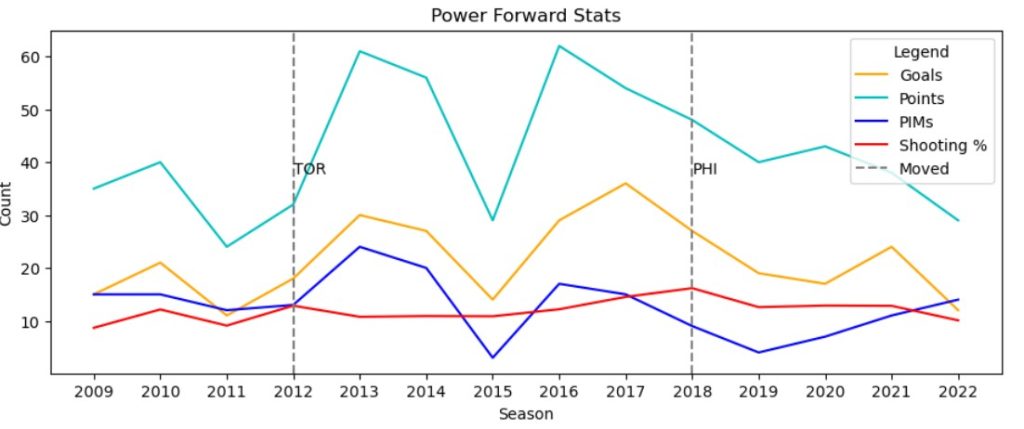
Goals/Points
In an ideal world, every forward player would be a high goal-scorer. But I’m here to help you not be disappointed by a 15-goal season. As you probably know by now, I am a big fan of comparing actual goals scored and individual expected goals. Individual expected goals (ixG) are specific to the player, thus making it a great statistic to determine if a player was meeting expectations.
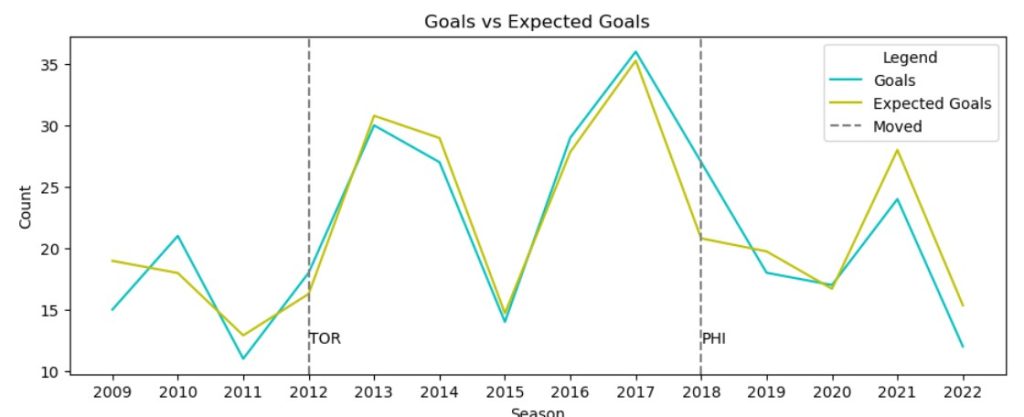
JVR is a 34-year-old forward who is still very much so meeting expectations. These stats are great to see, especially considering the fact that he was on a Philadelphia team that has missed the playoffs 7 times and lost in the first round 3 times in the last 11 seasons.
Ice Time Sidebar
As a veteran forward over the age of 30, ice time is an important metric to evaluate. Bringing on an older player, such as JVR, could be a risk for an already aging Boston Bruins. However, if the player can either maintain previous levels of ice time and/or lengths of shifts OR play with reduced time but still be impactful, then the benefits of a veteran on the ice outweighs their age.
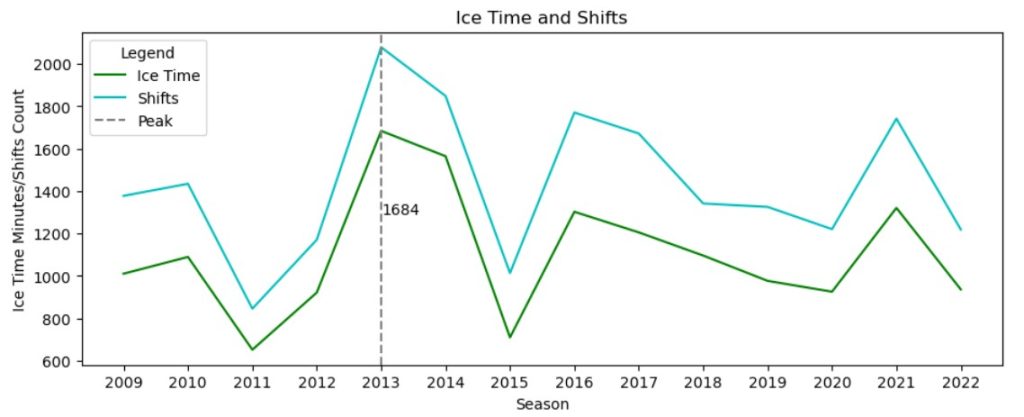
As you can see above, JVR still has the ability to play lengthy minutes. Below you can see how long his average shifts are, too. He is maintaining an average that would indicate that he is not slowing down any time soon. It’s important to note the high level of variability in his time on ice (TOI) and shift lengths between 2014 and 2019. During that time he spent quite a bit of time on the injured reserve (IR). He missed half the season in 2015, 16 games in 2018, and had a number of undisclosed injuries that likely limited his TOI in general as he tried to play through them.
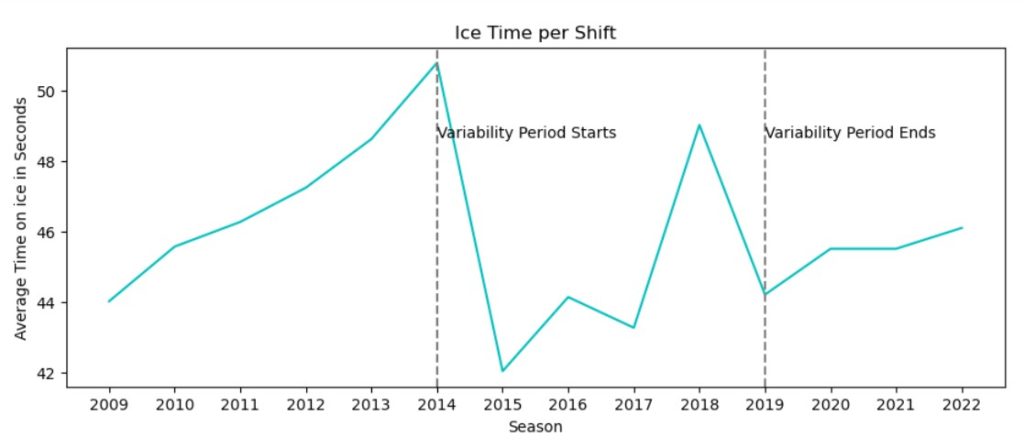
Hits
The second hallmark of a power forward is the ability to dole out big hits. As mentioned in a previous article, Looch has maintained an average of about 200 hits per season in his entire career. Brady Tkachuk, a much younger player, has averaged 247 hits per season in his five years in the league! It does not appear that big hits are really part of JVR’s repertoire. I imagine that, early on in his career, he was pegged as a power forward because he demonstrated a goal-scoring ability and was throwing out hits at a high rate. That rate did not continue; it’s not surprising that it dropped between 2014 and 2019 (injuries), and it’s stayed fairly low since.
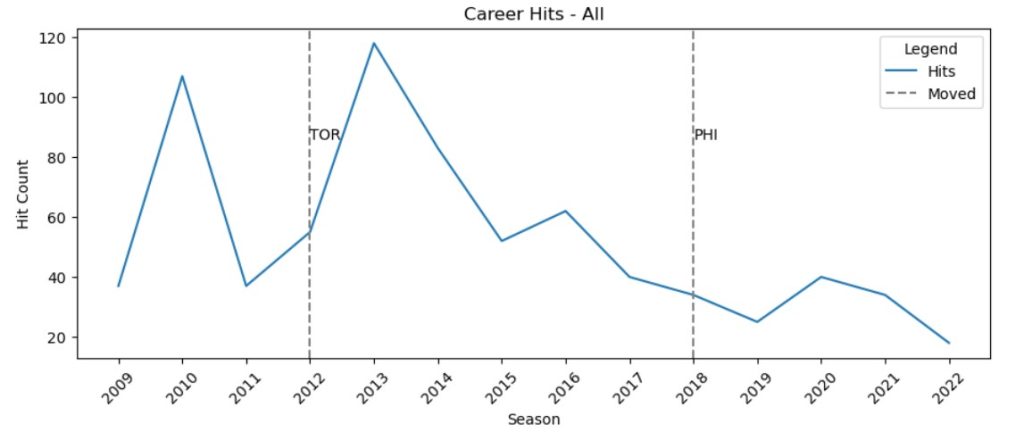
PIMs
Because stats like hits, expected goals, and individual points percentage (IPP) are a modern sports analytics phenomenon, we can’t dive too deeply into players of the past. I would love to compare all of our modern power forwards to Eric Lindros, Mark Messier, and Brendan Shanahan. One stat we do have from the time before advanced analytics is PIMs. The third hallmark of a power forward, PIMs always tend to be high for these players. While the league has made many, many changes to the rules since the 1980s, it’s still a stat that stands out among the power forwards.
Take a look at this comparison of PIMs by Cam Neely, Milan Lucic, and JVR over the course of their careers. Not surprisingly, Neely comes out on top with a ridiculous number of average PIMs per game. In his sixth season, he was averaging 14 penalty minutes per game! Looch is a great comparison to make to JVR, as they are both current players, playing under the same rules. Looch continues to maintain two to four minutes per game, on average. It does not appear that JVR commits infractions in any significant way.
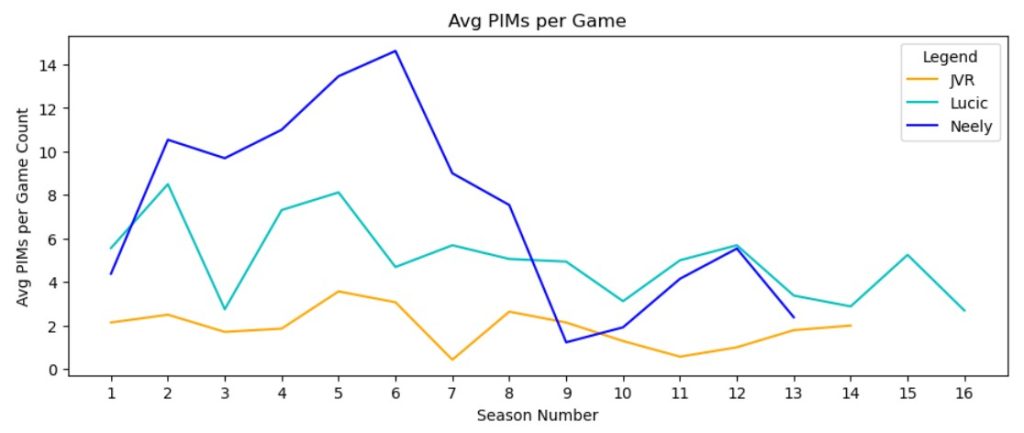
A closer look at JVR’s penalties per season shows that he is a pretty squeaky-clean player. Each bar in the graph is topped with the total number of penalties he took in each season. His numbers are on the rise again after his stretch of injury-laden seasons, but I would guess, based on his first few seasons, that his natural average is around 15 penalties per season.
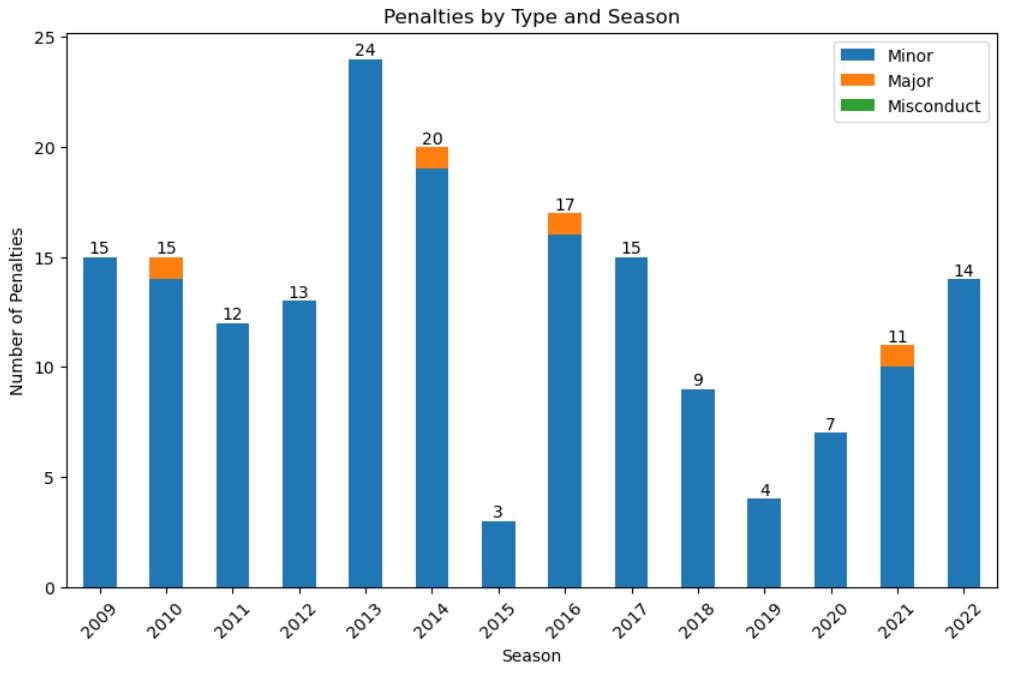
A Changing Game
Don’t be disappointed that JVR isn’t the power forward he was predicted to be back in 2007. Either the “experts” were wrong, or he changed his game. As a veteran player, I would like to see him contribute on the ice in any fashion, and I am pleased with his stats in that regard. Let’s compare him to Lucic one last time.
IPP for forward players, on average, is 68%; this means that forwards are expected to earn a point on about 68% of the goals scored while they are on the ice. For defensemen, an average IPP is 30%.
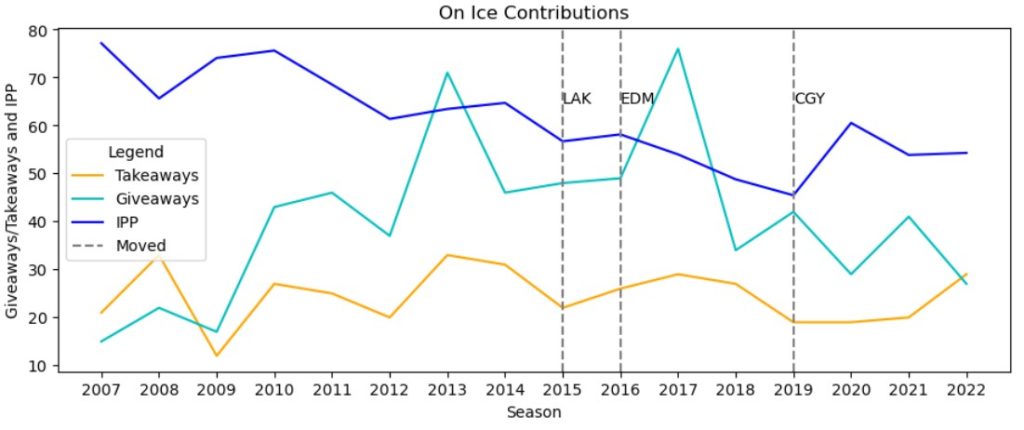
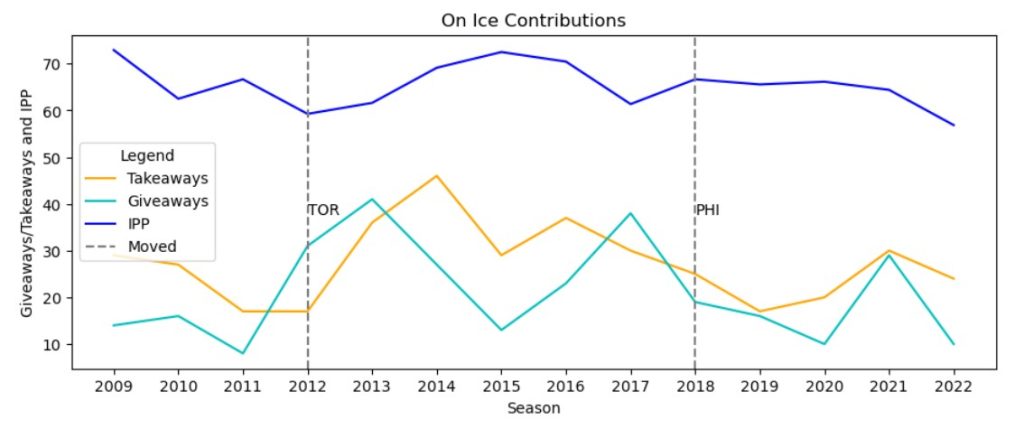
With the loss of the best defensive forward in NHL history, the Bruins will be looking to cobble together players who can have a similar on-ice impact as Bergeron. JVR might be one of those players; his takeaway/giveaway numbers look great, indicating an aggressive style of play. While I don’t expect JVR to be a top-line forward this upcoming season, I think he will be a good backbone player, contributing wherever he is placed.


Leave a Reply